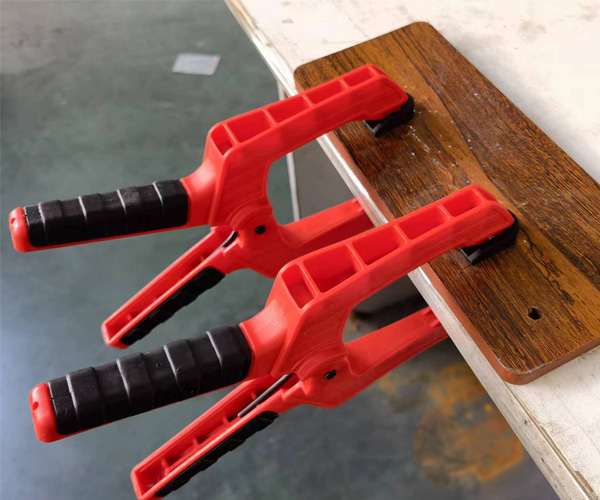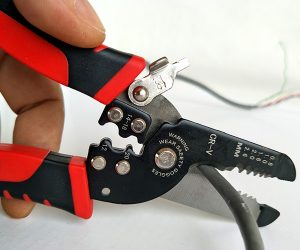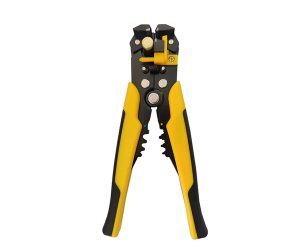Introduction
Ever looked at a spring clamp and wondered what it’s for? These small but mighty tools are staples in workshops, homes, and even photography studios. They’re simple in design but incredibly versatile, providing solutions for countless tasks. Whether you’re a professional woodworker, a DIY enthusiast, or someone who needs to hold something in place temporarily, spring clamps are indispensable. In this article, we’ll dive deep into what spring clamps do, their unique features, and how they simplify everyday tasks. By the end, you’ll understand why they’re a must-have tool for anyone seeking efficiency and convenience.
What Is a Spring Clamp?
A spring clamp is a compact, handheld tool used to hold objects together temporarily. Its primary feature is a spring-loaded mechanism that allows the jaws to exert consistent pressure when clamping down on an object. The design is simple yet effective: two handles connected by a high-tension spring, leading to two gripping jaws. This straightforward mechanism ensures that the clamp can hold materials securely without requiring manual tightening or adjustments.
Unlike other clamps, such as C-clamps or bar clamps, spring clamps are prized for their ease of use. There’s no need to screw or unscrew anything; the spring does all the work. Because of this, they’re often referred to as “quick clamps.” Whether you’re working with wood, fabric, or metal, a spring clamp offers a convenient way to keep materials steady while you work. Additionally, they’re available in various sizes, making them suitable for tasks ranging from delicate crafts to heavy-duty repairs. Their compact size also makes them portable, allowing users to carry them in toolboxes or even pockets for on-the-go tasks.
The Basic Function of a Spring Clamp
The primary function of a spring clamp is to hold objects together firmly while leaving your hands free for other tasks. This functionality is made possible by its spring-loaded design, which applies constant pressure to the jaws. Once the clamp is in place, it keeps the materials steady, ensuring precision and stability. For example, a carpenter may use spring clamps to hold two pieces of wood together while the adhesive dries, preventing any movement that could compromise the bond.
Another key advantage of spring clamps is their ability to provide temporary solutions. Unlike permanent fixtures, they’re easy to apply and remove, making them ideal for projects that require frequent adjustments. For instance, photographers often use spring clamps to secure backdrops or reflectors in place during a shoot. Similarly, homeowners might use them for quick fixes, like holding a curtain rod temporarily or keeping cables organized.
The spring mechanism also ensures a uniform grip, reducing the risk of damaging delicate materials. Some spring clamps come with rubber-coated tips, which further protect surfaces from scratches or indentations. This combination of strong grip and gentle handling makes them suitable for a wide range of applications.
Common Uses of a Spring Clamp
Spring clamps are incredibly versatile, serving various purposes in different industries and at home. One of their most common uses is in DIY projects, where they hold materials like wood, plastic, or fabric in place while you work. Whether you’re gluing, sanding, or painting, a spring clamp keeps your hands free, allowing you to focus on precision.
In woodworking, spring clamps are essential for tasks like holding pieces steady for cutting or joining. They’re particularly useful for small-scale projects where larger clamps would be cumbersome. For photography, spring clamps shine by securing backdrops or reflectors. Their lightweight design makes them easy to reposition, enabling photographers to achieve the perfect lighting or background setup.
Spring clamps also play a significant role in home repairs. They’re perfect for quick fixes, such as holding a broken item together until adhesive sets or temporarily securing a curtain rod. Additionally, they’re a staple in crafting, where they keep materials like fabric or paper steady, making sewing or scrapbooking much easier.
Specialized Uses of Spring Clamps
Beyond common applications, spring clamps are indispensable in specialized fields. For example, in automotive repairs, they’re used to temporarily hold hoses or wires in place during maintenance. This is particularly helpful when working in tight spaces where other tools might not fit. In industrial settings, spring clamps secure parts for light manufacturing processes, providing stability during assembly or testing.
Outdoor enthusiasts also rely on spring clamps for tasks like securing tarps, tents, or banners. Their ability to withstand outdoor conditions, especially when made of rust-resistant materials, makes them ideal for camping or event setups. Additionally, some professionals use spring clamps for temporary electrical work, holding wires or small components in place.
Why Are Spring Clamps So Popular?
Spring clamps owe their popularity to a combination of affordability, versatility, and ease of use. Compared to other clamps, they’re often more cost-effective, making them accessible to professionals and hobbyists alike. Their simple design eliminates the need for screws or additional adjustments, saving time and effort during projects.
Another reason for their widespread use is their adaptability. Whether you’re working on a small craft project or a large-scale construction task, spring clamps can adjust to your needs. Their portability adds to their appeal, as you can easily carry several clamps to different worksites without hassle.
Materials and Build Quality of Spring Clamps
Spring clamps come in various materials, each offering unique benefits. Plastic clamps are lightweight and resistant to corrosion, making them ideal for indoor projects. Metal clamps, on the other hand, provide superior durability and grip strength, making them suitable for heavy-duty tasks. Many spring clamps also feature rubber-coated tips to prevent scratches and protect delicate surfaces.
For outdoor use, rust-resistant materials or coatings are essential. This ensures that the clamp maintains its functionality even in damp or wet conditions. High-quality spring clamps often come with reinforced springs, providing consistent tension over time.
Choosing the Right Spring Clamp for Your Needs
Selecting the right spring clamp depends on the task at hand. Size is a crucial factor; smaller clamps are perfect for crafts, while larger ones handle heavy-duty jobs. The grip strength of the clamp should also match the materials you’re working with. For delicate tasks, opt for clamps with padded jaws to avoid damage.
It’s also essential to consider the clamp’s material and durability. If you’re working outdoors or in humid conditions, choose rust-resistant options. For professional-grade performance, look for clamps from trusted brands or manufacturers.

How to Properly Use a Spring Clamp
Using a spring clamp is straightforward. Open the jaws by squeezing the handles, position the clamp over the materials, and release the handles to secure it. Ensure the clamp is placed correctly to avoid slipping or damaging the materials. For added stability, use multiple clamps evenly spaced along the workpiece.
Maintenance and Care for Spring Clamps
To extend the life of your spring clamps, clean them after each use. Remove any dirt, adhesive, or residue that could affect their grip. Lubricate the spring mechanism periodically to maintain smooth operation. When not in use, store your clamps in a dry place to prevent rust or corrosion.
Spring Clamps vs. Other Clamps
Spring clamps are distinct from other types of clamps like C-clamps or bar clamps. While C-clamps provide a tighter grip for heavy-duty tasks, they require manual adjustment, making them less convenient for quick fixes. Bar clamps, on the other hand, are better for larger projects but lack the portability of spring clamps.
Safety Tips When Using Spring Clamps
Safety is paramount when working with spring clamps. Always position them carefully to prevent slipping, which could damage materials or cause injury. Avoid using excessive force when squeezing the handles, especially on high-tension clamps. Finally, keep clamps away from children or pets to ensure safety.
Creative and Unconventional Uses of Spring Clamps
Spring clamps aren’t limited to professional tasks. They’re handy for organizing cables, holding recipe books open in the kitchen, or even as makeshift phone stands. Their versatility extends to gardening, where they can secure plant covers or DIY greenhouses.
Frequently Asked Questions (FAQ)
What sizes do spring clamps come in? Spring clamps range from a few inches to larger models suitable for heavy-duty tasks.
Can spring clamps damage delicate surfaces? Many spring clamps come with rubber-coated tips to prevent scratches.
How much weight can a spring clamp hold? This depends on the size and material, but most clamps are designed for lightweight to medium tasks.
Are there specific spring clamps for outdoor use? Yes, clamps made of rust-resistant materials are ideal for outdoor projects.
Conclusion
Spring clamps are versatile, affordable, and easy-to-use tools that simplify countless tasks. Whether you’re a professional or a hobbyist, their ability to hold materials securely makes them an essential addition to any toolkit. If you’re looking to enhance your projects or solve everyday problems, consider adding spring clamps to your collection today!
Spring clamps are indispensable tools that make countless tasks easier, from DIY projects to professional work. As an OEM spring clamp factory, we specialize in producing high-quality, durable clamps that can be customized to meet your specific branding and functional needs. Whether you’re a wholesaler, distributor, or retailer, we are here to provide tailored solutions to help your business stand out.
Looking for customized spring clamps with your brand? Contact us today to discuss your requirements, and let us help you deliver quality products that your customers will love!





